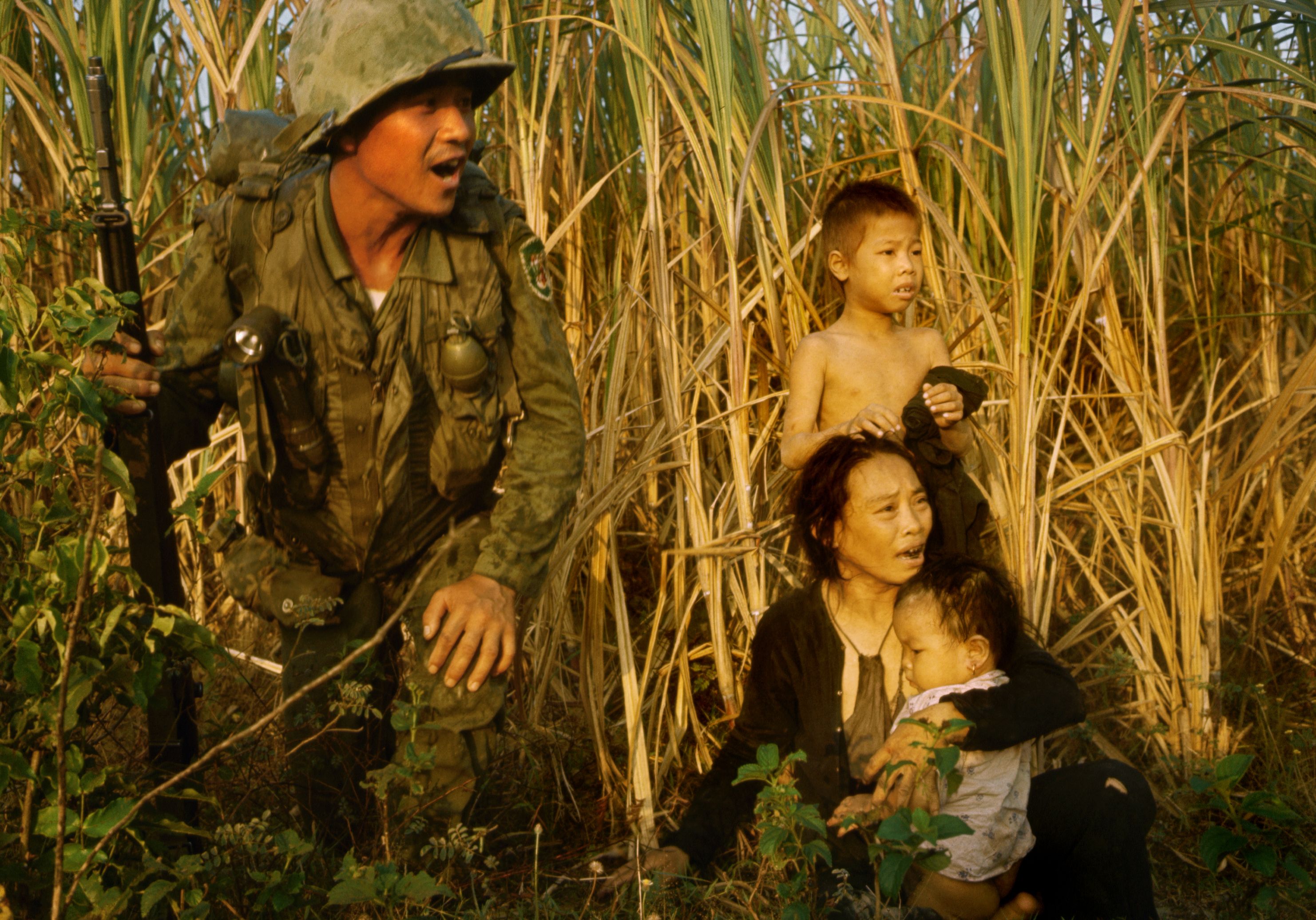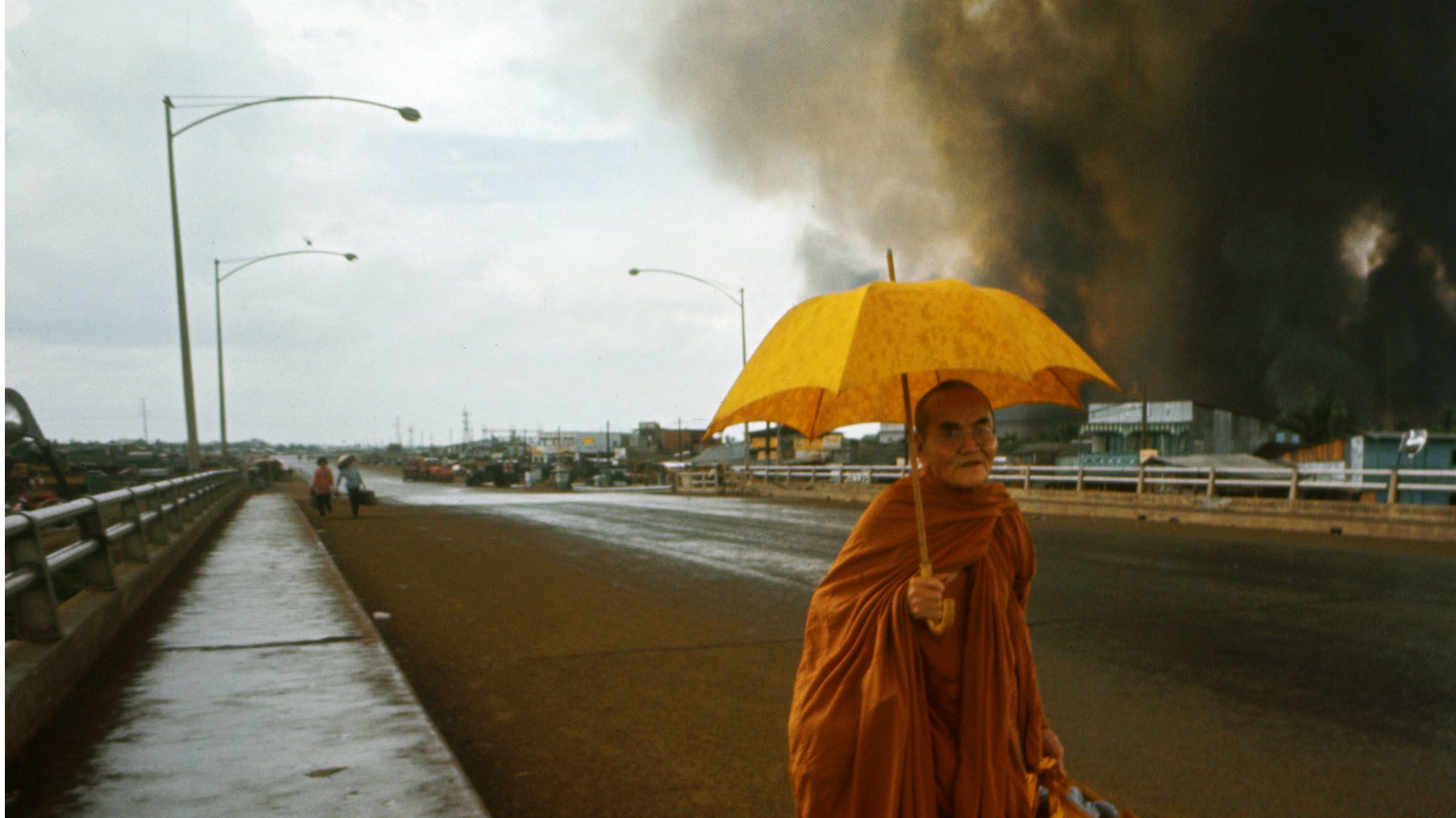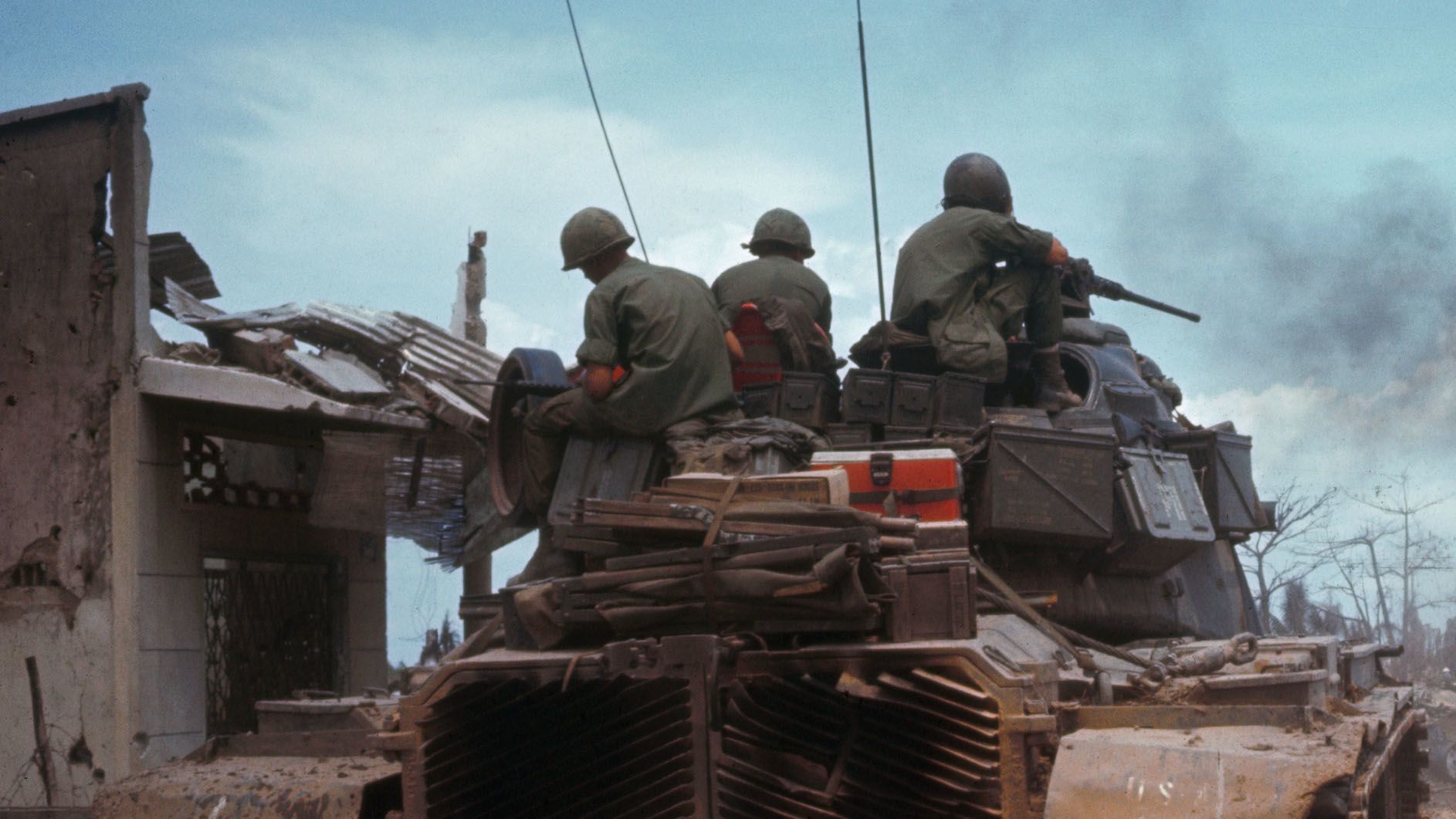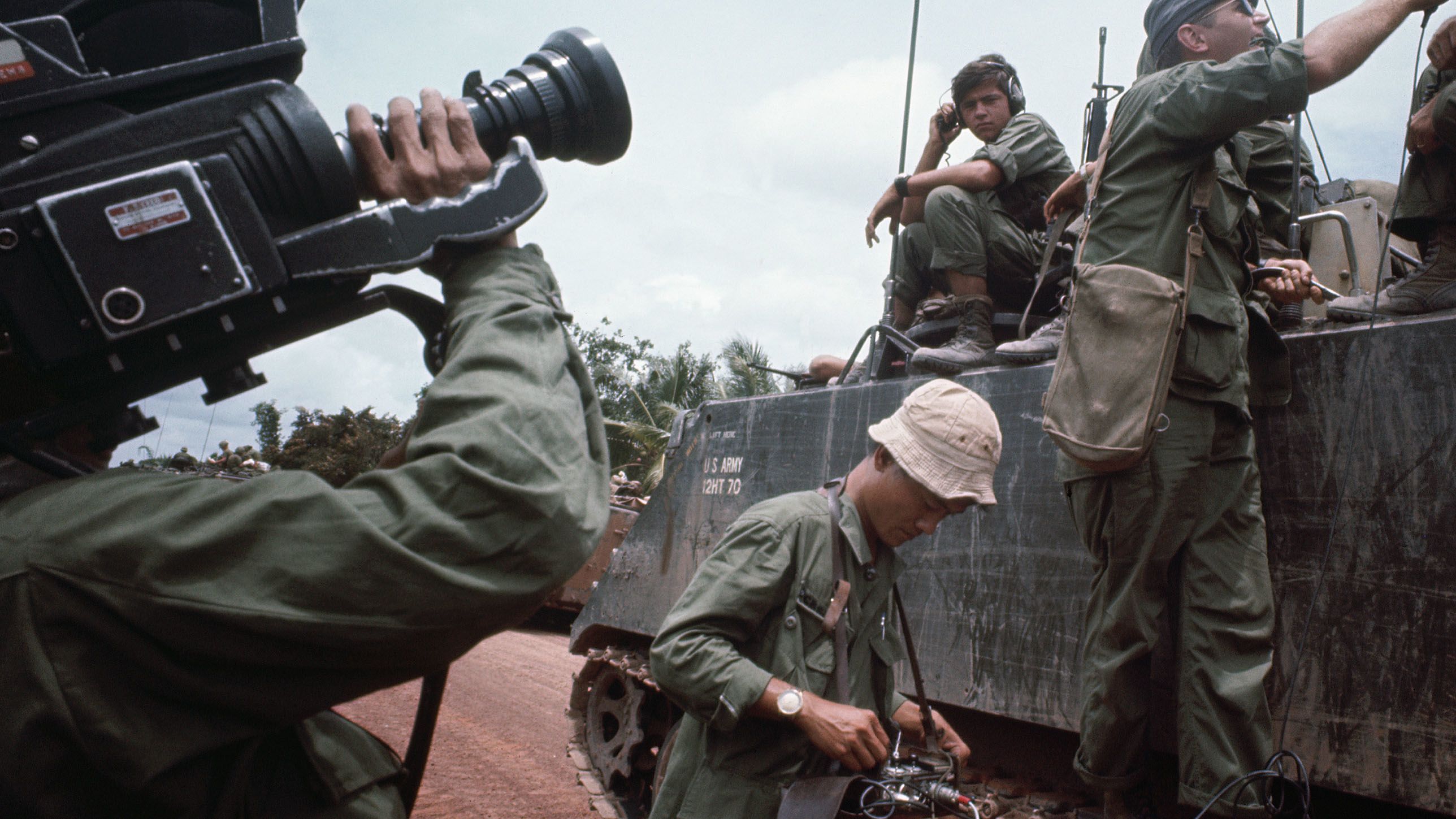Tim Page, the photographer who lived on borrowed time
Witness to the Vietnam War with an idiosyncratic humanist agenda
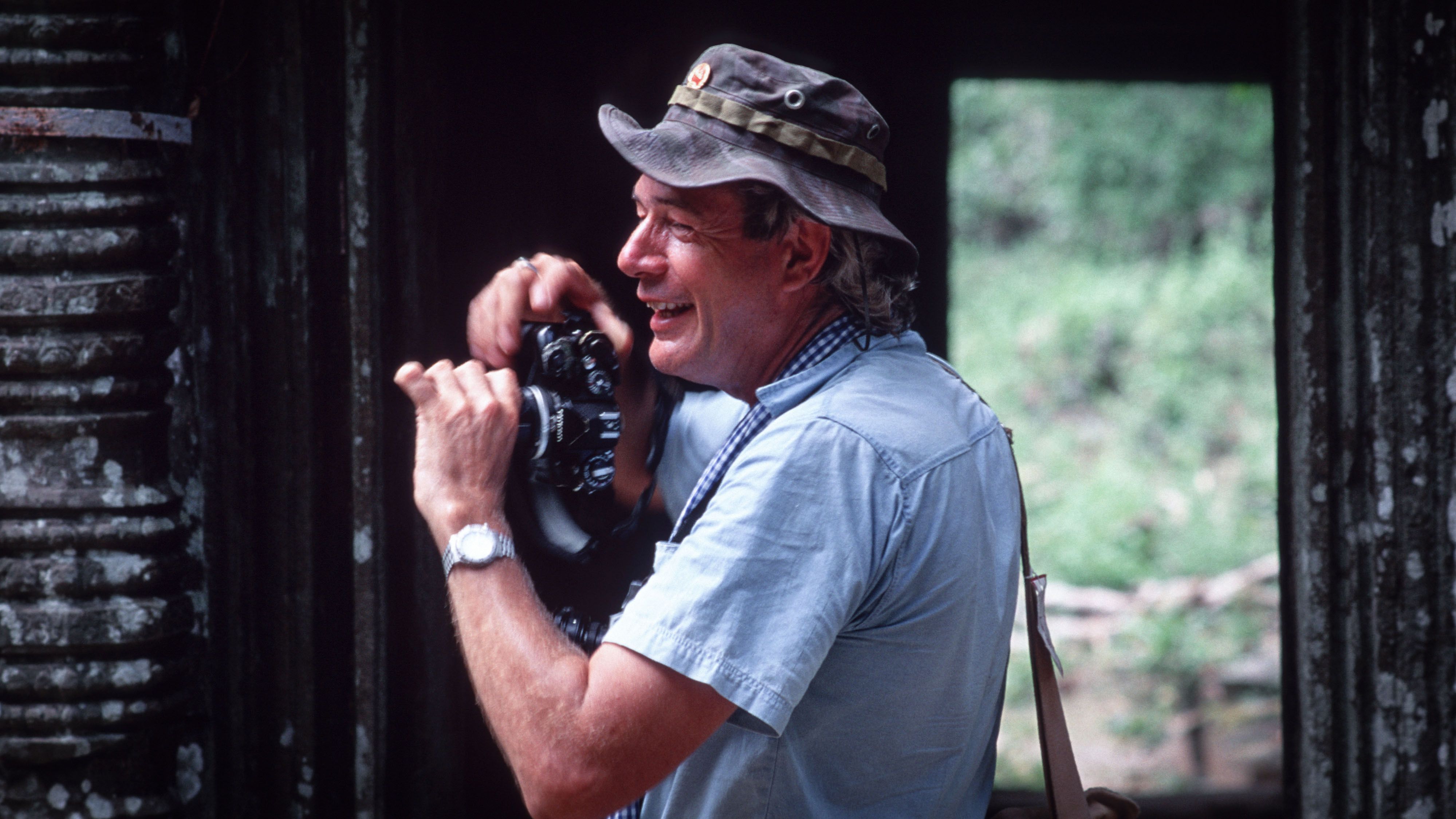
When word spread in May that Tim Page, the British photographer who made his name in the 1960s during the Vietnam War, had been diagnosed with aggressive liver cancer, many said it was a miracle that he was alive at all after years of close calls and hell-raising.
Page, who was 78 when he died on Aug. 24, was ranked among the 100 most influential photographers of all time by the U.S. magazine Professional Photographer in 2012.
There will be a nondenominational gathering at his home in Australia on Sept. 10 ahead of his cremation.
At 16, he was nearly killed in a motorbike accident in England. He had two more near-fatal experiences by the time he was 25.
In 1994, during an expedition in Cambodia, Page became so dehydrated that he thought he would die. The plane evacuating him to Phnom Penh nearly crashed on takeoff.
Twelve years later, Page fractured his pelvis with a fall in Hanoi. Doctors in Bangkok could not operate for more than a week. Stent implants were needed first if he was not to die on the operating table because of three earlier heart attacks. The accident likely saved his life.
Australian surgeons later operated on him for about eight hours. "They pulled out some metal bits," Michael Hayes, the founding editor of the Phnom Penh Post and a close friend, told Nikkei Asia.
"If you ever saw him without a shirt, his stomach looked like a tangled spider web, scars all over -- a real mess," Hayes said.
A friendly fire incident in 1966 involving a U.S. patrol boat he was aboard left Page peppered with hundreds of small wounds and bobbing about barely alive in the South China Sea. His most serious wounding came in 1969, when a five-centimeter shard from a land mine lodged in his head.
Page loathed hospitals, which made him maudlin and lachrymose. He chose to die at home in Australia in the care of Marianne Harris – known as Mau to most -- his partner of more than 20 years. He dubbed his cancer "the triffid," and forwent chemotherapy in favor of cannabis and palliative care.
Page was raised in a caring household in Orpington, southeast London. His adoptive father was an accountant who read to him at bedtime. "Somehow I gathered that my genetic father had been torpedoed while serving [in World War II] on a Russian-bound convoy for Murmansk or Archangel, but I knew nothing of my real mother," he wrote in his 1988 autobiography, "Page After Page: Memoirs of a War-Torn Photographer.”
He attributed his carelessness with personal safety to the motorbike accident that failed to kill him: "I was alive. I was not dead, and it seemed very clear, very free,” he wrote. “This was the dawning, the overture to losing a responsible part of my psyche. A liberation happened at that intersection. Anything from here on would be free time, a gift from the gods."
Hunter S. Thompson, the archetypal gonzo journalist, refused an assignment with Page to Vietnam in 1975 on the grounds that he was "too crazy."
There was certainly madness involved in the kouprey hunt that almost killed him in Cambodia's remote Mondulkiri province in 1994. The search for the rare bovine was in a wilderness with Khmer Rouge remnants and ferocious bugs. The organizers included Nate Thayer, the American correspondent who tracked down Pol Pot on the Thai border three years later.
Someone mentioned tigers. Page's solution was to wear cartoon masks facing backwards. "Large cats never attack from the front, they pounce on the neck and disembowel from behind," he wrote. "I had brought out John Major, Margaret Thatcher, Miss Piggy and Donald Duck."
Two of Page’s close journalist friends, Mark Dodd and Ben Bohane, members of his "inner band of brothers," read messages and reminisced with him in his final months at his bush home near Bellingen in New South Wales.
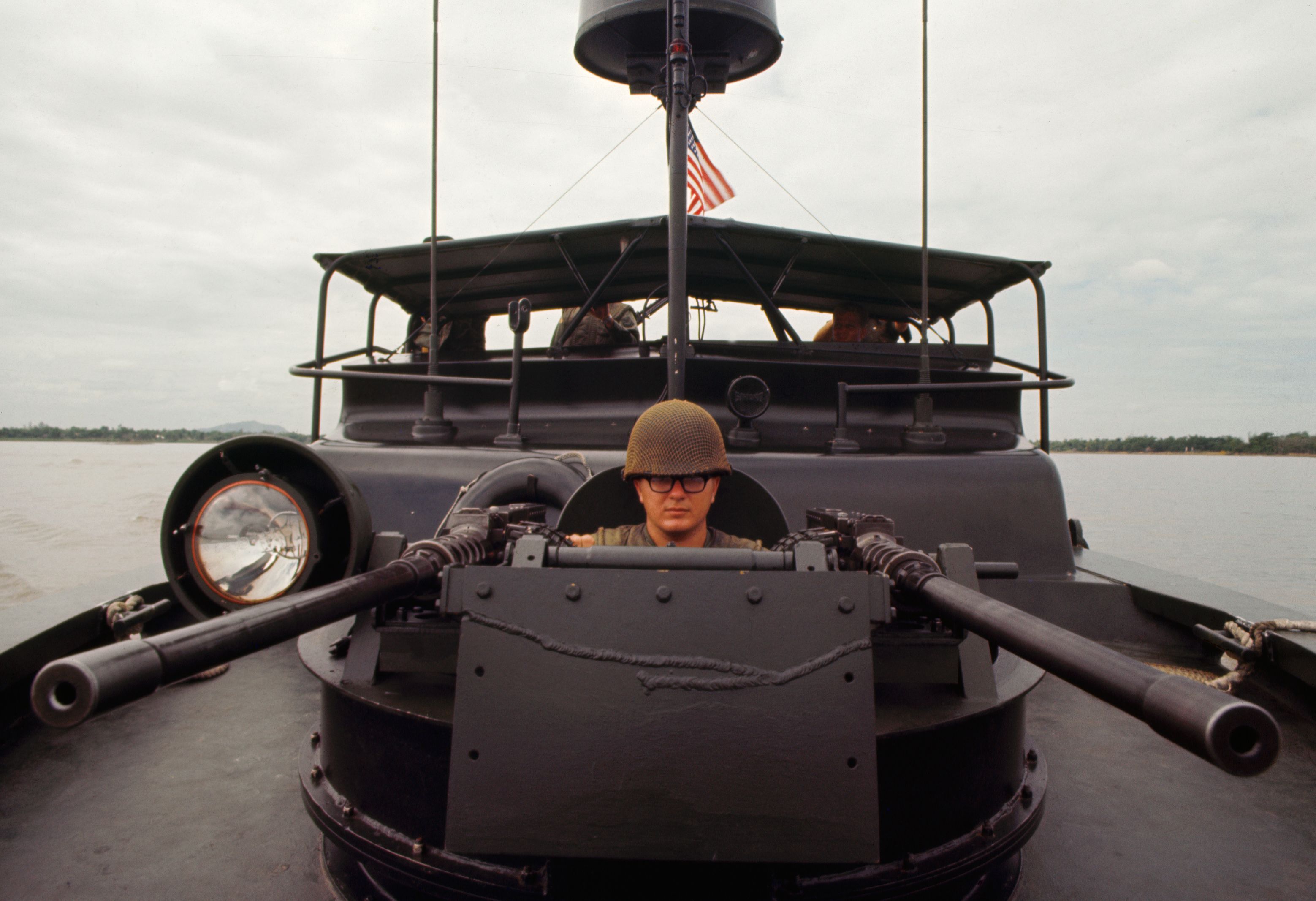
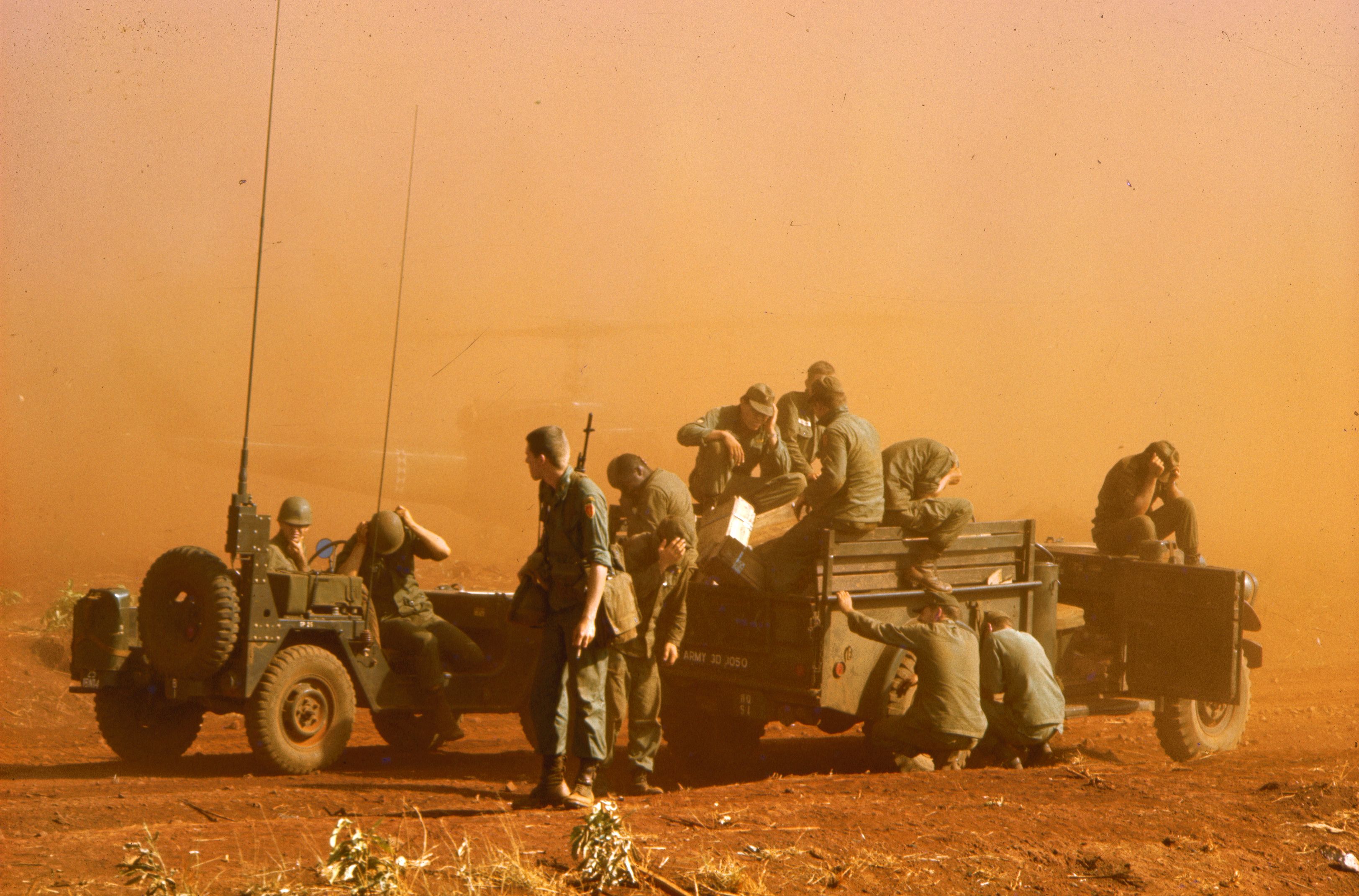
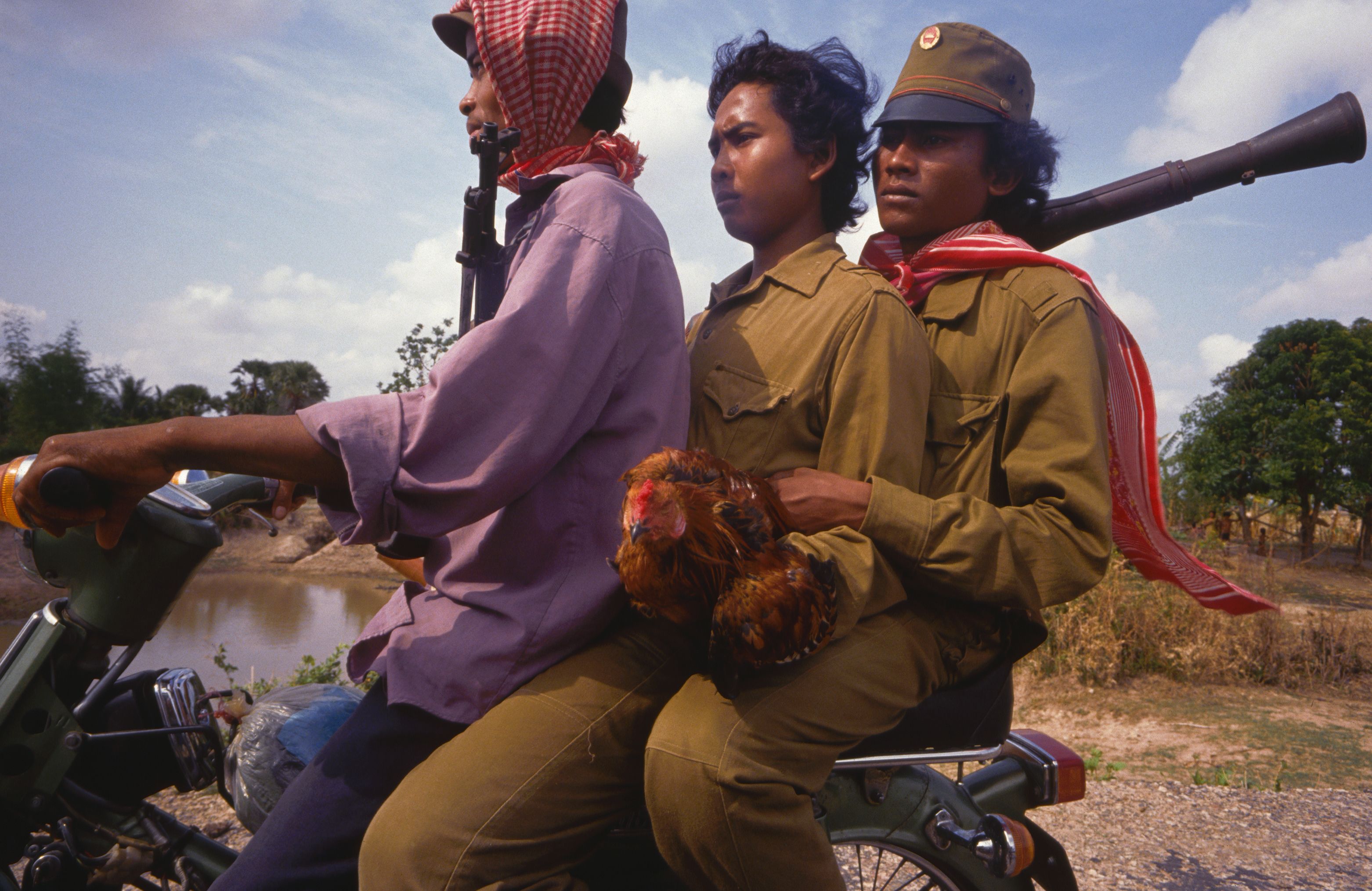
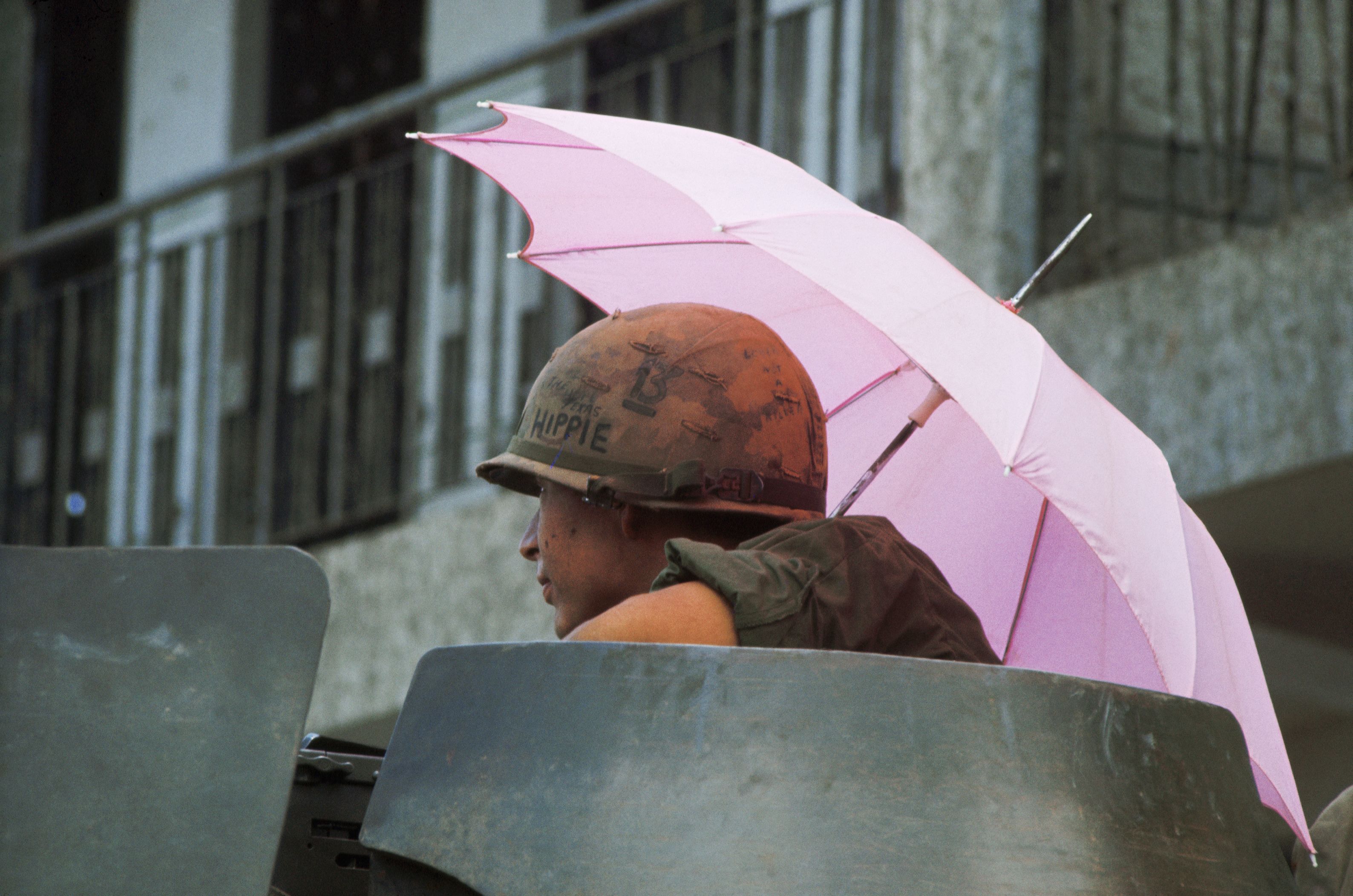
Mini-Tet, Saigon, 1968: A signature Page image of a U.S. soldier shading himself atop an armored personnel carrier. (Photo by Tim Page/Getty Images)
Mini-Tet, Saigon, 1968: A signature Page image of a U.S. soldier shading himself atop an armored personnel carrier. (Photo by Tim Page/Getty Images)
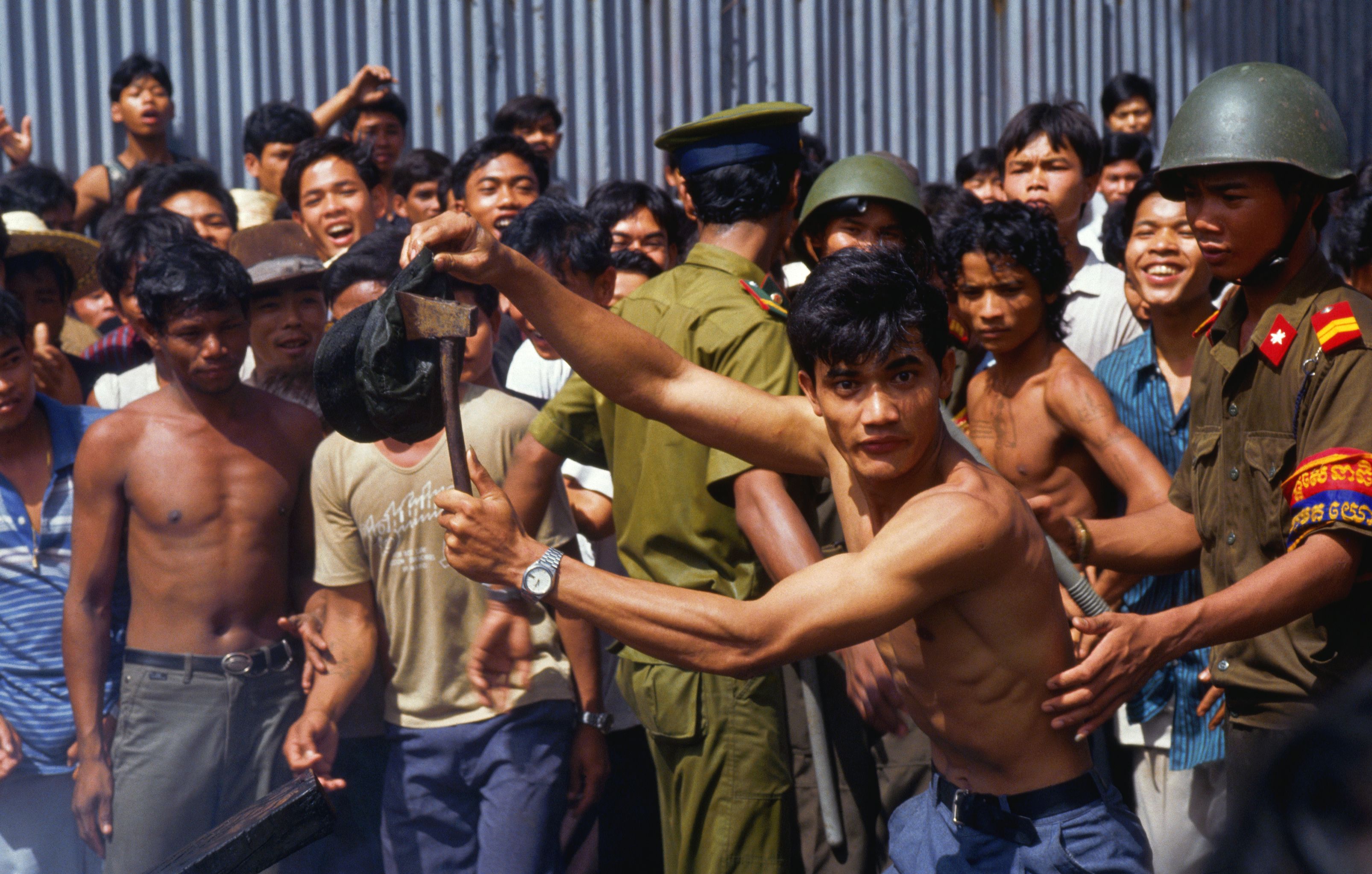
When Khmer Rouge leader Khieu Samphan first returned to Phnom Penh, the Cambodian capital, in November 1991, Page was on hand to photograph the incited crowd outside his house threatening to lynch him. (Photo by Tim Page/Getty Images)
When Khmer Rouge leader Khieu Samphan first returned to Phnom Penh, the Cambodian capital, in November 1991, Page was on hand to photograph the incited crowd outside his house threatening to lynch him. (Photo by Tim Page/Getty Images)
Page always said it was more important to be a decent human being than a great photographer," Bohane said. "Even though he is mostly known for being a rock 'n' roll war photographer, it's important to remember his abiding humanism. He really wanted to bring attention to conflict and suffering as a way to end it. One of his most famous lines was, 'The only good war photograph is an anti-war photograph.'"
A brilliant raconteur, Page enjoyed public speaking, and basking among admirers at events. He was an engaging, detailed writer with unique turns of phrase -- dubbed "Pagespeak" by one of his editors. Anything or anyone he approved of was loudly declared to be "righteous" -- the ultimate Page benediction.
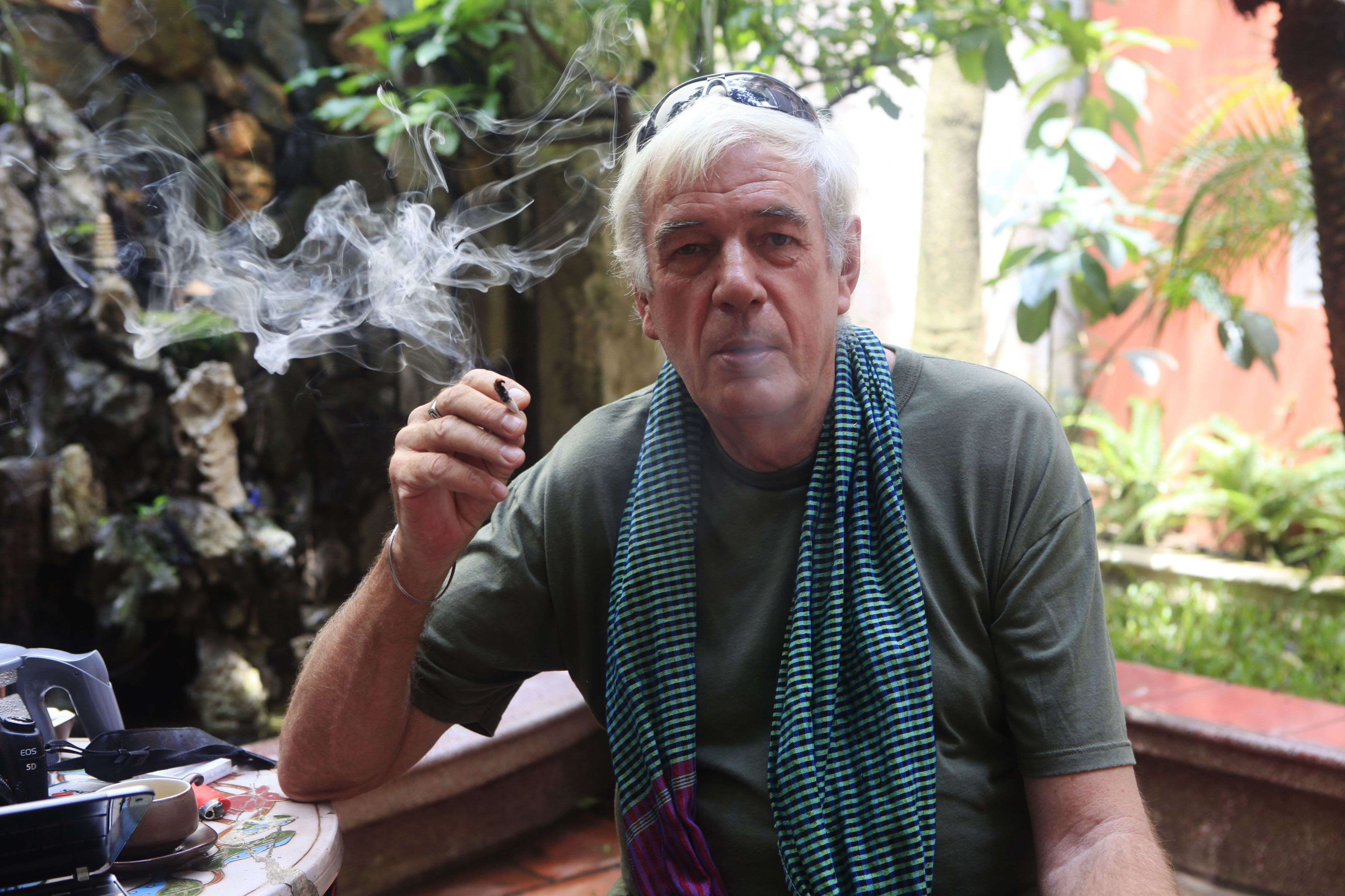
During a visit to Hanoi in 2010, Page fractured his pelvis in a fall. He was medevacked to Bangkok where doctors could not operate for a week because of three earlier unnoticed heart attacks. Stents were implanted, and the accident likely saved his life. (Photo by Chau Doan/Getty Images)
During a visit to Hanoi in 2010, Page fractured his pelvis in a fall. He was medevacked to Bangkok where doctors could not operate for a week because of three earlier unnoticed heart attacks. Stents were implanted, and the accident likely saved his life. (Photo by Chau Doan/Getty Images)
Author Michael Herr devoted more than a dozen pages to Page in his 1977 book “Dispatches,” about his time in Vietnam for Esquire magazine. "He only had one way of speaking, it could have been to me or the Queen," Herr wrote.
Francis Ford Coppola's epic “Apocalypse Now” was adapted from “Dispatches” and “Heart of Darkness,” Joseph Conrad's 1899 novella set in colonial Africa. In the 1979 Vietnam War film, Dennis Hopper played a crazed American photojournalist, a character often said to have been inspired by Page.
"Dennis Hopper really played himself with a bit of me as the freaky photographer in his mind," Page once told an interviewer. "Everywhere I go, it's a good introductory story to tell."
The young Page described by Herr endured to the end: "His talk was endlessly referential, he mixed in images from the war, history, rock, Eastern religion, his travels, literature (he was very widely read and proud of it), but you came to see that he was really only talking about one thing, Page. He spoke of himself in the third person more than anyone I ever knew, but it was so totally ingenuous that it was never offensive."
Page's consumption of drugs was legendary. He used LSD heavily in the 1970s as he fought off paralysis on one side caused by the severe head wound in 1969, and puffed "weed" incessantly.
On the eve of Cambodia's 1993 general election organized by the United Nations, there was a notorious party on the roof of the Phnom Penh Post building. Page had boiled up a chicken “bouillon” in a huge pot that contained 2 kilograms of marijuana.
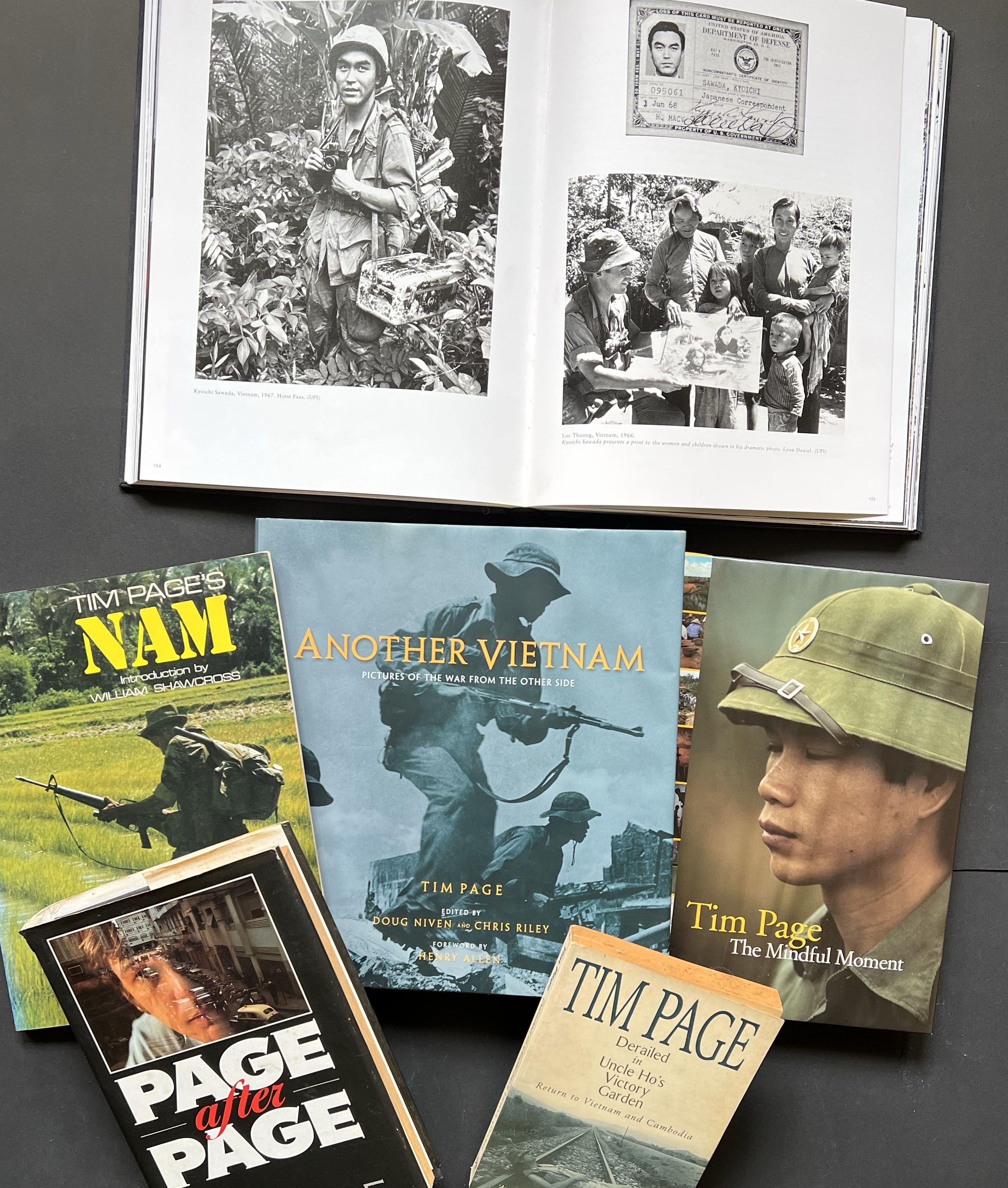
In 1977, “Requiem,” top, honored the 130 photographers on all sides who died in the Indochina conflicts from 1950, including Japanese photographer Kyoichi Sawada. Edited with Horst Faas, the Associated Press’s chief photographer in Vietnam during the war, it was one of the most acclaimed of Page’s dozen-plus books. (Photo by Dominic Faulder)
In 1977, “Requiem,” top, honored the 130 photographers on all sides who died in the Indochina conflicts from 1950, including Japanese photographer Kyoichi Sawada. Edited with Horst Faas, the Associated Press’s chief photographer in Vietnam during the war, it was one of the most acclaimed of Page’s dozen-plus books. (Photo by Dominic Faulder)
"Many folks maybe didn't know it was made with ganja, and got very stoned," Hayes, the newspaper's editor, said. "I didn't try it."
Page married Clare Clifford, his third wife, in a Buddhist ceremony on the Thai island of Koh Samui in 1992. Their son, Kit, is now 28.
"He was the most interesting man I have ever met,” Clifford told Nikkei. “I would not have missed my time with him for all the world.”
"As he aged, he mellowed enormously in the warmth of his long partnership with Marianne Harris, who so generously made it possible for Kit and I to be in frequent contact with Tim,” she said. Kit visited Page a few months ahead of his death, and Clifford spoke to him two days before.
Page was the first to admit he was a novice at the outset. He venerated his mentors, particularly Australian cameraman Neil Davis, whom he met in 1964.
"Later, after I arrived in Saigon, you were the guy I wanted to be, and your generosity with information, contacts and tips was a weird thing in the world of competitive deadlines, and many of us rushing to prove our worth," Page eulogized on the 30th anniversary of Davis's death during a failed coup in Bangkok in 1985.
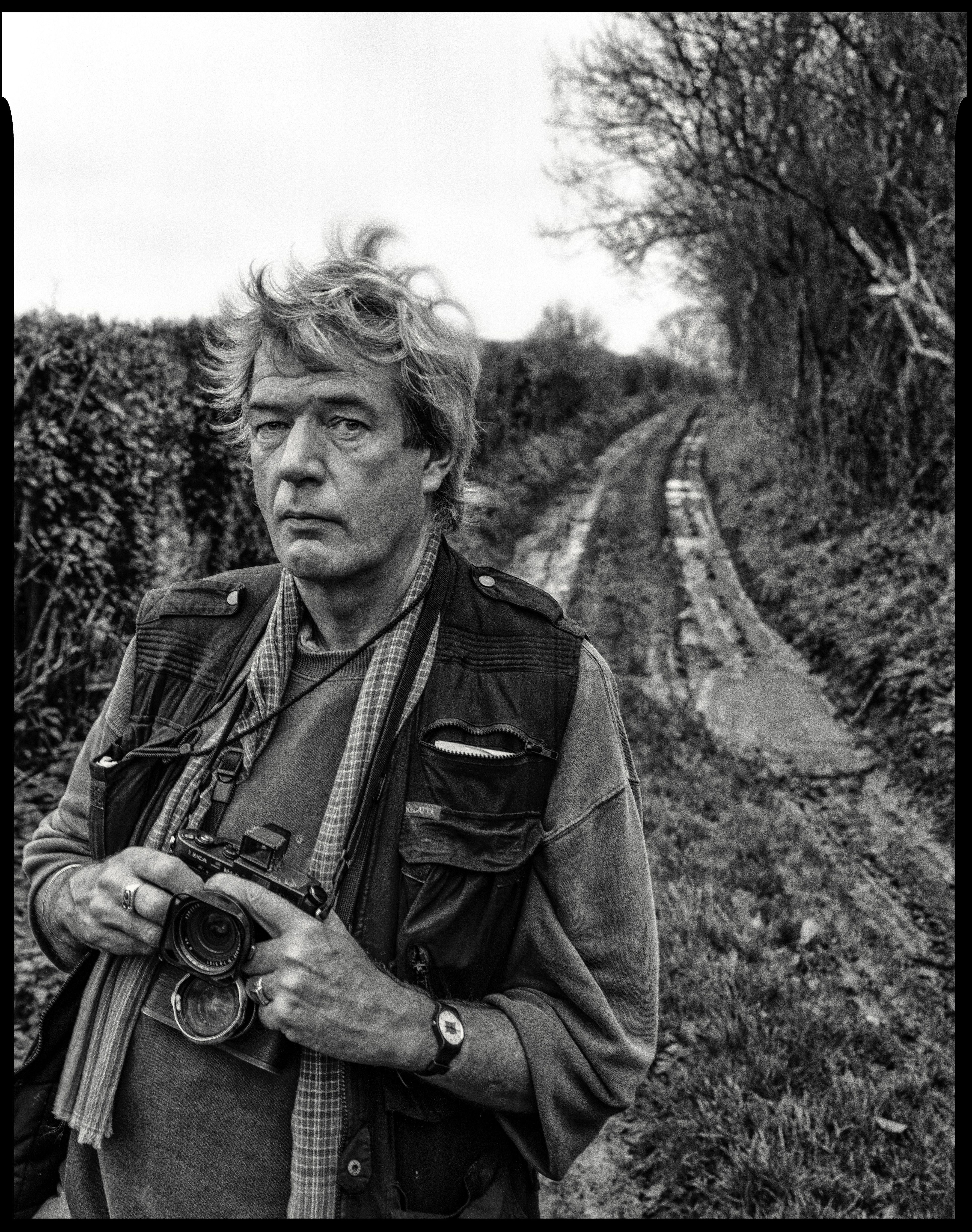
Page lived in Kent, southeast England, during the 1990s with his third wife, Clare Clifford, and their son Kit. He raced along the country lanes in a gas-powered Land Rover, but struggled with the “normality” of British life. (Photo by Derek Hudson/Getty Images)
Page lived in Kent, southeast England, during the 1990s with his third wife, Clare Clifford, and their son Kit. He raced along the country lanes in a gas-powered Land Rover, but struggled with the “normality” of British life. (Photo by Derek Hudson/Getty Images)
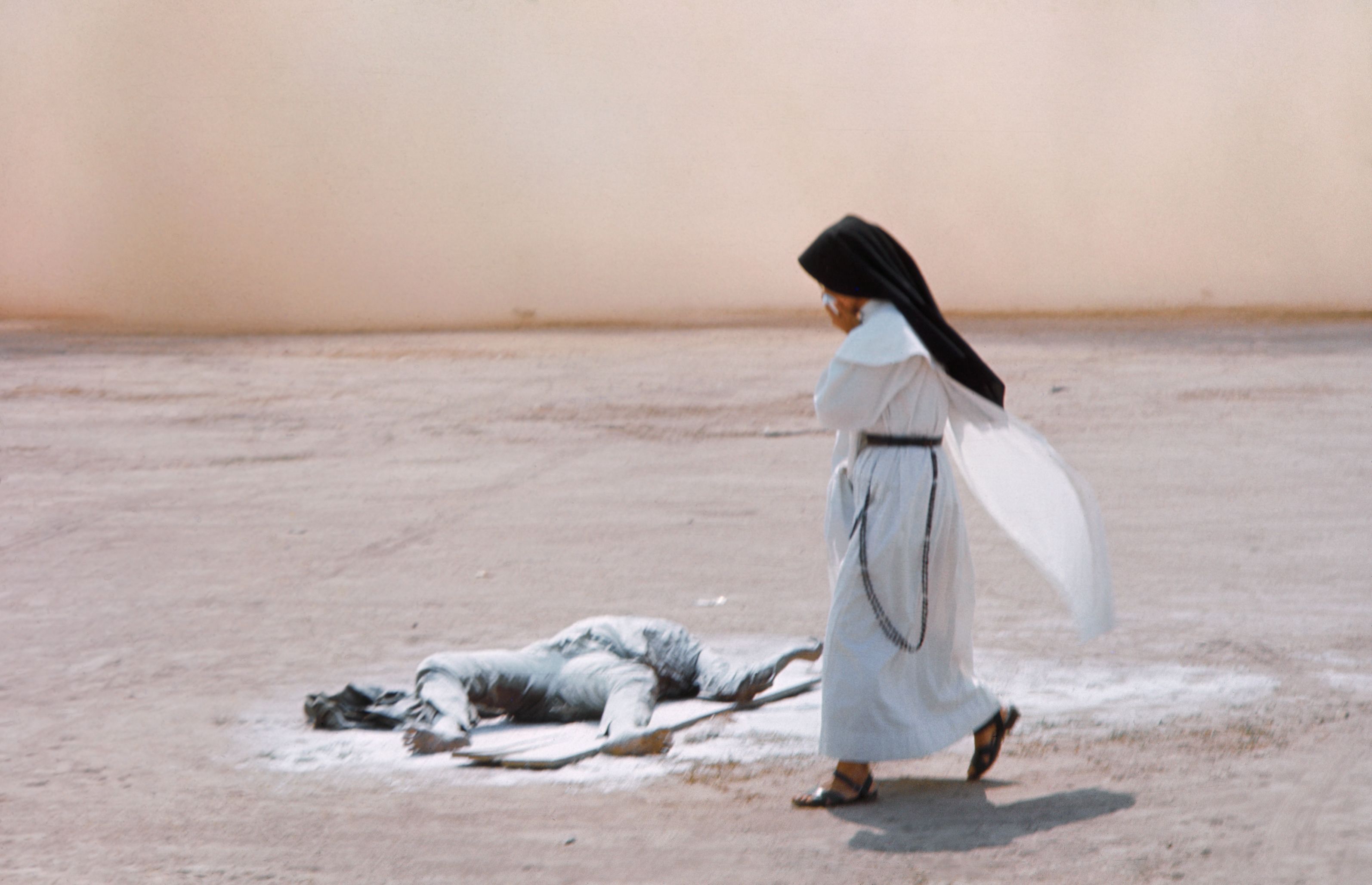
A Catholic nun passes the lime-dusted body of a North Vietnamese soldier. Page – and photographers like Don McCullin, Larry Burrows, Henri Huet and Kyoichi Sawada – brought unvarnished images of an ugly, unwinnable war to the news magazines and color supplements of the 1960s. Militaries have attempted to control the narrative by embedding journalists ever since. (Photo by Tim Page/Getty Images)
A Catholic nun passes the lime-dusted body of a North Vietnamese soldier. Page – and photographers like Don McCullin, Larry Burrows, Henri Huet and Kyoichi Sawada – brought unvarnished images of an ugly, unwinnable war to the news magazines and color supplements of the 1960s. Militaries have attempted to control the narrative by embedding journalists ever since. (Photo by Tim Page/Getty Images)
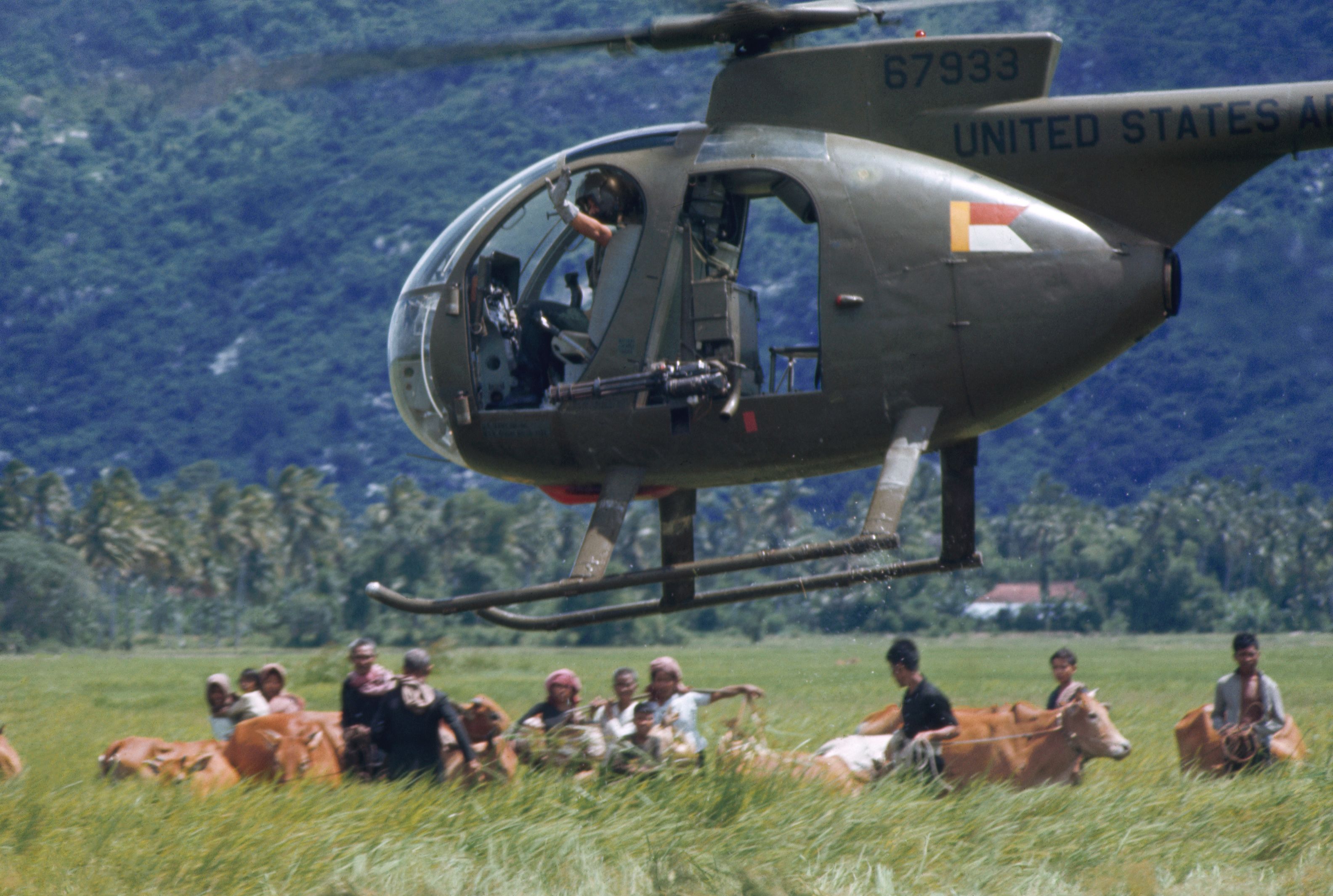
A U.S. army Loach scout helicopter corrals Vietnamese villagers in a war that became infamous for the body count of alleged communists. More than 3 million Vietnamese died, compared with 58,000 U.S. military personnel. (Photo by Tim Page/Getty Images)
A U.S. army Loach scout helicopter corrals Vietnamese villagers in a war that became infamous for the body count of alleged communists. More than 3 million Vietnamese died, compared with 58,000 U.S. military personnel. (Photo by Tim Page/Getty Images)
Page expended enormous time and energy searching for the remains of American photographers Sean Flynn and Dana Stone. They were captured by Vietnamese forces in Cambodia in April 1970, then handed over to the Khmer Rouge. Page eventually recovered three teeth and a filling from villagers in Kampong Cham province.
"The length of their captivity, thirteen months, is surprising," Page wrote. "Their unwitnessed executions, Khmer Rouge-style, with a blow to the back of the head with a hoe, must have been appalling."
Although the University of Kent awarded him an honorary bachelor of arts in the 1990s, Page’s impeccable 1960s counterculture credentials probably denied him a place among “the great and the good” in the U.K.
In 2014, Cambodian Prime Minister Hun Sen -- another person who often speaks of himself in the third person -- made Page a Chevalier de l'Ordre de Sahametrei for his year as a senior adviser to Finnmap, a massive land-titling program.
Page was also treated better in Australia, where he was resident in his final decades. He became an adjunct professor of photojournalism at Griffith University. A collection of his photographs sits in the Australian War Memorial in Canberra.
“Requiem,” a monumental 336-page photographic homage to fallen colleagues, was published in 1997 and edited by Page and Horst Faas, the chief photographer for the Associated Press in Southeast Asia from 1962 to 1974.
The book honors the 135 photographers on all sides who had died in the conflicts in Indochina since 1950. In the introduction, David Halberstam, a Pulitzer Prize-winning reporter for The New York Times, lauded the photographers.
"We deferred to them, reporter to photographer, in that venue as we did in few others," Halberstam wrote. Photographers, he said, were bonded by "the knowledge of the risk, and how total it was with every throw of the dice."
“Requiem” won the Robert Capa Gold Medal awarded by the Overseas Press Club of America, and the George Polk book award.
Page was feted in press clubs, particularly the Foreign Correspondents' Club of Thailand. In 1991, he founded the Indochina Media Memorial Foundation, which developed from a whip round in the FCCT clubhouse. A photo auction in Bangkok the following year raised more than $40,000.
Under the direction of Sarah McLean, a former British foreign office official living in Bangkok, IMMF-Thailand went on to provide training to over 900 journalists from Cambodia, Laos, Myanmar, Thailand and Vietnam. It also published basic and advanced journalism training manuals in English and the main regional languages.
Page focused on “Requiem” and later organized four photography workshops in Vietnam between 2002 and 2010 with IMMF-United Kingdom.
"No one else in this industry was ever as generous to me, or to the legions of other young photographers,” Gary Knight, co-founder of the VII Photo Agency, told Nikkei.
"He lent us his Leicas, introduced us to his network, gave us prints, looked at our work, encouraged us to think, and mostly showed us that being a journalist wasn't just about journalism, it was about being human,” Knight said. “I loved him."
"Farewell Tim," Kevin Barrington, a former AFP bureau chief in Phnom Penh, posted. "You were the living embodiment of the wonders of the whole war correspondent show -- where boredom just wasn't an option."
